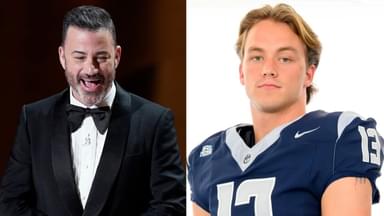The NCAA’s long-standing grip on the NIL madness is officially broken. With the ratification of the $2.8 billion House v. NCAA settlement, college athletics has entered a new financial era — one where schools can directly pay their players under a formal, revenue-sharing model.
Advertisement
This shift, which takes effect in July 2025, represents the most sweeping change in the NCAA’s modern history. At the core of this new system is a $20.5 million salary cap, an upper limit that defines how much each school can spend annually to compensate athletes across all varsity sports.
Though the cap is expected to rise over time, its introduction marks the first time college sports have introduced fiscal guardrails in the NIL space. And while some have praised the new structure for bringing order to the chaos, not everyone sees it as progress.
Paul Finebaum, a longtime voice in college football media, was among the critics, and he didn’t mince words during his latest appearance on The Dan Patrick Show.
“This is only going to help the rich. Have you heard that before?” Finebaum asked Dan Patrick rhetorically. “The big leagues — the Big Ten, the SEC — will more than likely profit because they have so much money.”
For Finebaum, this change isn’t about fairness. It’s more about further consolidation of power, with the wealthiest programs gaining even more leverage in the race for talent. Even if the new rules provide structure, that structure, in his view, is built to fortify the strong, not uplift the underdogs.
And for anyone who has remotely come across George Orwell’s work, it’s easy to make out that Finebaum sees the implications of this new structure putting fans of smaller schools in a not-so-healthy space.
“If you’re a fan of a Group of Five school, if you’re a fan of a school somewhere in the middle, get ready for hard times,” Finebaum warned.
That’s not speculation by the host of the Paul Finebaum Show, because it’s a consequence of the system’s design.
With power-conference schools planning to commit the full $20+ million annually, and over 70% of those funds expected to go to football, the gap between the haves and the have-nots is only set to grow. Olympic sports and non-revenue programs will feel the financial squeeze first — something the veteran CFB analyst also shed light on.
“Women’s sports, in my opinion, will be hurt. Olympic sports will be crushed,” Finebaum said. “Football wins. Basketball—other than maybe the Big East—takes a slight back seat.”
Beyond the money matter, Finebaum also argued that this seismic shift confirms what many have long suspected: the NCAA is no longer the force it once was.
“The NCAA is essentially dead. And I know a lot of people are celebrating, but the damage that has been done by this organization is incalculable.”
Once feared as the enforcer of college rules, the NCAA has now taken a back seat. Oversight of athlete compensation will be handed off to the new College Sports Commission, a body formed by the Power Four conferences to enforce the cap and regulate NIL compliance through a Deloitte-run clearinghouse.
The NCAA, meanwhile, is left tending to eligibility and academic issues, far from the authority it once wielded. “They don’t even have any jurisdiction for that anymore,” Finebaum said. “They’ve been completely ineffective.”
In the end, Paul Finebaum’s message for fans of smaller programs remains simple: This isn’t an equalizer. It’s an accelerant that widens the playing field further.







